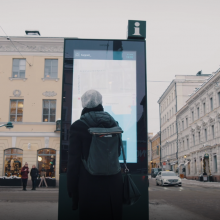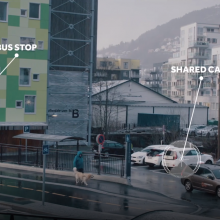Getting knowledge on how new infrastructure (or other changes in the city) influences the Urban flows and how people move around the city as pedestrians or on bikes.
The concrete goal of the pilot project is to collect flow data in connection to the new Metro line stations opening in July 2019 in Copenhagen. We expect that flow data can give the City of Copenhagen a better understanding of the effects of the metro on urban flows. Specifically, we need data about pedestrian and cyclists’ routes to and from the metro stations. The City also need data about obstacles and barriers for these road users in order to improve accessibility and walkability.
Background
How does a new 3,3 billion euro metro line affect urban life? The City of Copenhagen has identified a need for flow data in the administration. Now we are inviting innovative companies to help us collect data about transport patterns around the new metro stations opening in July 2019. The project is a pilot project with the aim of testing the technologies available on the market and proving the value of flow data in urban planning and maintenance use cases. The city of Copenhagen expects the use cases, applications and value of the pilot project to be general and transferable to other Nordic cities in the network.
The data will be used to benchmark the effects of the new metro line and to inform strategic planning of urban development and construction projects in Copenhagen and possibly the members of the Nordic Smart City Network.
How is data collected today?
Today data is collected manually once a year between 07.00 and 19.00 at selected sites across the city. The methodology is based on Jan Gehl’s methods, with two different types of counting: one for stays and one for number of pedestrians on a street.
The City of Copenhagen also collects traffic counts at selected sites but this method does not provide information about routes or pedestrian traffic.
Potential for scaling up
There is a large potential for implementing flow data in other use cases and scaling the solution to other cities.
The municipality of Copenhagen is the country's largest with just over 600.000 inhabitants and covers an area of 86 square kilometres. In recent years the population has grown by approximately 1.000 new citizens every month which causes an increased demand for mobility, public space and maintenance of parks and streets.
Nordic Smart City Network: People and flows in Copenhagen from Copenhagen Solutions Lab on Vimeo.



